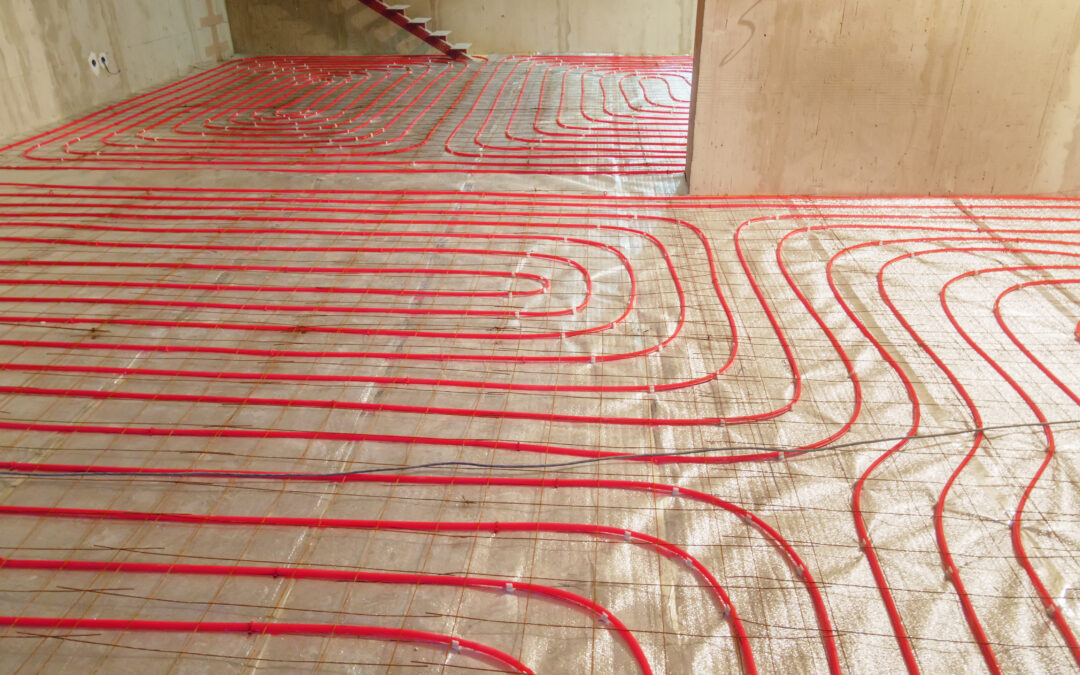Updated 30/08/2023
Many homeowners today are concerned about their impact on the environment. They work to ensure their homes are energy efficient and search for products that are eco-friendly. But when it’s time to change the flooring, many find it challenging to find flooring that’s environmentally friendly.
What’s even more confusing is there are many products that are called “environmentally friendly.” However, the truth is that some products claimed to be good for the environment are anything but.
We’ve created this short guide to help you find flooring that’s truly eco-friendly. We explain what to look for in flooring products and explain what is eco-friendly or not.
What Makes Flooring Eco-Friendly?
Sustainability is essential for many homeowners today. When they’re working on a remodel or it’s time to upgrade flooring, they want to find products that support their values. Here are some factors to watch for when searching for environmentally friendly flooring.
1. Flooring’s Durability
The flooring’s durability is the most important indicator of determining how eco-friendly it is. Flooring that has a longer life doesn’t need to be replaced as often. On the other hand, flooring that’s not as durable means replacing it more often. That leads to creating waste and more pollution due to the manufacturing process.
However, durable flooring is the most environmentally friendly choice. These floors last longer and don’t have to be replaced as often.
Let’s take a look at an example. Perhaps you’re considering vinyl plank flooring. At first glance, this flooring may appear to be a wrong choice due to the fact that it’s made from synthetic materials. However, if you see it from another perspective, vinyl flooring doesn’t have to be replaced as often. This makes it an eco-friendly choice. This type of floor can last over fifty years in some cases!
2. Floorings Place of Origin
Next, it’s important to consider the flooring’s place of origin. Flooring products are made all over the world. The materials may be sourced from one country and manufactured in another. So, if you’re looking for sustainable flooring, it’s essential to consider where the products came from.
Here’s an example. A finished flooring product is made in the US; however, the materials were sourced from overseas and shipped to the US. This means a significant increase in carbon emissions for the creation of the flooring.
On the other hand, flooring made from locally sourced materials is the most environmentally friendly.
3. The Floor’s Recyclability
All flooring eventually reaches the end of its useful life. At this point, it must be replaced. But what happens to the old flooring? Are they recycled and turned into new products? Are they repurposed for other uses? Or is the landfill where they end up?
These are all important questions when it comes to the life cycle of flooring. It used to be that no one really worried about what happened to the flooring at the end of its life. But today, with landfills becoming overloaded, it’s crucial to consider the end life of any flooring.
Floors that can’t be recycled have a significant negative impact on the environment, even years after they’ve been removed from your home.
The solution to this problem is to buy flooring that can be recycled or buy flooring made of recycled materials. Choosing these flooring products reduces waste. For example, low-VOC carpet can be made from recycled bottles and rubber flooring from old tires. These are products that are reused rather than thrown into landfills. They’re a more environmentally friendly choice of flooring.
4. Consider the Flooring’s Materials
It’s also crucial to consider a flooring’s materials; many are made from renewable resources. Even engineered wood flooring is partially made of renewable plywood. Renewable sources are those that can be replenished. For instance, bamboo forests are used to manufacture bamboo flooring. These forests grow quickly, making them a reliable renewable resource.
Another example is the wood used to make hardwood flooring or the clay used to make scratch-resistant floor tiles. These are also renewable materials that can be replanted or recreated.
Hemp flooring is another great example of environmentally friendly flooring. It’s fast and easy to regrow, much like bamboo.
However, flooring that’s made of renewable materials doesn’t mean the materials (such as bamboo) are being renewed or harvested responsibly. For instance, some types of wood, such as teak, can be harvested renewably. However, the reality is that much of the wood is still harvested illegally.
When you’re searching for environmentally friendly flooring, look for third-party certifications that ensure the product is made with renewable production methods.
5. Flooring’s VOC Levels
Another concern with new flooring is that it can put off large amounts of VOCs. VOCs stands for volatile organic compounds. These are chemicals produced by industrial manufacturing and the chemicals used in the production of flooring.
Certain types of flooring can outgas harmful chemicals into your home’s air. However, you can limit this problem by choosing flooring that contains no VOCs. For instance, you can look for vinyl flooring that’s low-VOC. There are also non-toxic floorings such as low-VOC carpets and more.
Different Types of Environmentally Friendly Flooring
Now you know what to look for to ensure flooring is environmentally friendly! You’re ready to consider the different types of flooring that are more eco-friendly.
Hardwood Flooring
- Look for products certified by NWFA’s Responsible Procurement Program and/or the Forest Stewardship Council.
- Look for wood flooring that has the GREENGUARD Gold Certification from UL (Underwriters Laboratories).
- Consider reclaimed flooring (which is salvaged from older homes and buildings)
Bamboo Flooring
- Look for bamboo flooring that has the FSC certification.
- Search for bamboo flooring that’s formaldehyde-free (to avoid VOCs)
- Buy bamboo flooring from a local store (not a big box home improvement store)
Cork Flooring
- Look for products that are FSC or PEFC certified.
- Buy your flooring from a local store rather than a big box home improvement store
- Choose low-VOC cork flooring products
Tile Flooring
- Look for materials that are recyclable, such as ceramic, porcelain, and glass
- Purchase materials source from the UK rather than overseas
- Ensure that all adhesives and grouts are low-VOC.
- Consider the use of recycled tiles
Laminate & Vinyl Flooring
- Look for products manufactured domestically
- Look for products with the GREENGuard, GREENGuard Gold, and/or FloorScore certification
- Ask local flooring experts about the newest environmentally friendly flooring options available
Carpeting
- Look for materials made from natural or recycled sources
- Try to buy carpets from manufacturers that offer take-back programs
- Look for GREENGuard and/or FloorScore certifications to ensure you buy on low-VOC carpet
Summing It Up
There’s a lot to consider when purchasing environmentally friendly flooring. But when you know what to look for, the process is that much easier!
Choosing environmentally friendly flooring ultimately comes down to personal preference and choice. It’s up to you to determine what factors most fit your needs for environmentally friendly flooring for your home.
FAQs
Q: Are carpets eco-friendly?
A: Some carpets can be eco-friendly, especially those made from natural fibres like wool or those made from recycled materials.
Q: How can I maintain environmentally friendly flooring?
A: Regular cleaning using non-toxic cleaners and avoiding harsh chemicals can help maintain the eco-friendliness of your flooring.
Q: Is tile flooring environmentally friendly?
A: Ceramic or porcelain tiles can be eco-friendly, especially when made from recycled materials and installed using low-impact adhesives.
Q: Are there sustainable options for hardwood flooring?
A: Yes, consider FSC-certified hardwood or reclaimed hardwood for more sustainable choices.
Q: Can I install environmentally friendly flooring myself?
A: Absolutely. Many eco-friendly flooring options are DIY-friendly, reducing the need for professional installation.
Q: How do I dispose of old flooring materials responsibly?
A: Check with your local recycling facilities for options to recycle or repurpose old flooring materials.



